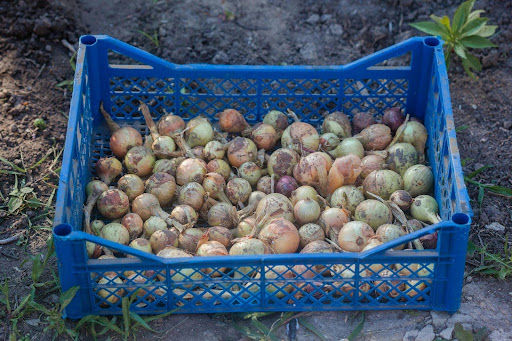Best Practices and SOPs for Harvest Tools and Equipment
- Breanna Hannula
- Oct 6
- 2 min read
Harvest tools and equipment are crucial items for produce production, and it is essential that they are appropriately cleaned and maintained.

Harvest tools and equipment are considered food contact surfaces, which means they must be cleaned to reduce the risk of contamination. According the the FSMA Produce Safety Rule, growers must:
“Inspect, maintain, and clean, and when necessary and appropriate, sanitize all food contact surfaces of equipment and tools used in covered activities as frequently as reasonably necessary to protect against contamination of covered produce.” (112.123(d)(1))
What This Means For Your Farm
To meet both the regulatory expectations and best practices, keep these in mind:
Inspect Tools and Equipment Regularly
Before and after use, check harvest tools, containers, and equipment for damage, buildup, or signs of contamination. Address any issues right away, whether that means a repair, a replacement, or a thorough cleaning.
Create Clear SOPs
Write down the step-by-step process for cleaning and sanitizing harvest tools and equipment. This ensures that everyone on your team follows the same procedure and nothing important is missed. SOPs can assist with:
Training new workers
Ensuring consistency
Meeting audit expectations
Establish a Cleaning Schedule Based on Use and Risk
Some tools need more frequent cleaning than others. For example:
High-use items like picking buckets, knives, and clippers may need to be cleaned and sanitized daily, especially during peak harvest.
Larger items like bulk bins or lug boxes might only need a deep cleaning at the start of the season, unless visibly soiled or contaminated during use.
Visible dirt or “filth” is an indicator that the tool is in need of cleaning.
Monitor and Maintain Tools
Cleaning alone isn’t enough. Dull blades, broken handles, or splintering wood can pose food safety and worker safety risks. Set a schedule for sharpening, repairing, or replacing harvest tools as needed.
Example: Basic SOP for Cleaning Harvest Tools and Equipment
Customize your SOPs to fit your operation and tools.
Title: Cleaning and Sanitizing Harvest Tools
Frequency: Daily during harvest
Who is Responsible: Harvest crew leader or assigned worker
Supplies Needed: Clean water, detergent, scrub brushes, sanitizer
Procedure:
Pre-rinse tools with clean water to remove visible dirt and debris.
Wash all surfaces using detergent and a scrub brush. Focus on handles, blades, and any grooves.
Rinse with clean water to remove soap and loosened dirt.
Sanitize by soaking or spraying with a sanitizer approved for food contact surfaces at the correct concentration.
Air dry tools on a clean rack or surface before storing.
Make cleaning and sanitizing part of your farm’s routine. Establish procedures and schedules to make cleaning easier over time, prevent buildup, and reduce last-minute scrambles during busy harvest days. With a little preparation and consistency, maintaining clean harvest tools can become a manageable part of daily operations.
---
Article by Breanna Hannula, Produce Safety Technician


